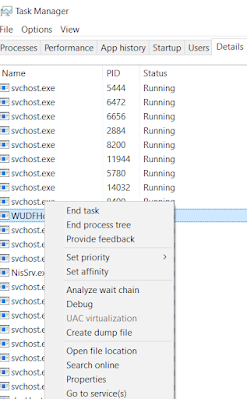Software Design Basics || Fault vs Failure
In software engineering, terms like "fault" and "failure" are fundamental, yet they are often misunderstood or used interchangeably. Grasping the difference between these concepts is crucial for developing reliable software and effectively troubleshooting issues. Let’s delve into these terms, enriched with insights from the referenced video, to clarify their meanings and implications.
What is a Fault?
A fault refers to an incorrect step, process, or data definition in a computer program. It is essentially a flaw in the system's code or design that has the potential to cause the software to operate incorrectly. Faults are often introduced during the development phase and may remain undetected until they are triggered under specific conditions.
Example of a Fault:
Consider a function designed to calculate the average of a list of numbers:
def calculate_average(numbers):
return sum(numbers) / len(numbers)
If the input list is empty, this code will result in a "division by zero" error. The absence of a check for an empty list is a fault in the program. However, this fault does not cause any issues until the function is called with an empty list as input.
What is a Failure?
A failure occurs when a software system does not perform as intended or expected. It is the observable manifestation of a fault during the execution of the software. Failures are the result of faults being triggered by specific conditions during runtime.
Example of a Failure:
Using the same Calculate_Average function, if a user passes an empty list to the function, it would throw a runtime error:
calculate_average([]) # Results in ZeroDivisionError
This runtime error is a failure that the user experiences, and it stems from the fault in the code.
Key Differences Between Fault and Failure
| Aspect | Fault | Failure |
|---|---|---|
| Definition | A defect or flaw in the system’s code or design. | The system’s inability to perform as expected. |
| Location | Exists in the code or design. | Occurs during execution or operation. |
| Trigger | May or may not lead to a failure. | Always caused by an underlying fault. |
| Visibility | Often hidden or dormant. | Visible to the end-user or tester. |
Real-World Scenarios
The video explains that understanding faults and failures is pivotal in real-world applications where software reliability is critical. Here are some illustrative scenarios:
-
Fault Without Failure:
- A logging function contains a typo in a debug message. The fault exists, but it does not impact the software's functionality or performance.
-
Fault Leading to Failure:
- An airline booking system has a bug that fails to validate overlapping seat reservations. When two users simultaneously book the same seat, it results in a failure that impacts customer experience.
-
Failure Without a Fault in the Code:
- External factors such as hardware malfunctions or network outages can cause failures in otherwise fault-free software. For instance, a perfectly coded application may fail if the database server is down.
Watch the Video
To complement this discussion, watch this insightful video explaining faults and failures in software engineering. It covers additional real-world scenarios and strategies:
Fault vs Failure: Prevention and Mitigation
The video emphasizes a proactive approach to handling faults and failures. Here are actionable strategies:
-
Fault Prevention:
- Code Reviews: Regularly review code to identify and eliminate defects early.
- Best Practices: Follow coding standards and design principles to reduce the likelihood of faults.
- Team Training: Equip developers with knowledge of common pitfalls and best practices.
-
Fault Detection:
- Automated Testing: Implement unit, integration, and system tests to catch faults early in the development lifecycle.
- Static Analysis Tools: Use tools to analyze code for potential defects.
-
Failure Mitigation:
- Error Handling: Design robust error-handling mechanisms to minimize the impact of failures.
- Monitoring and Alerts: Use real-time monitoring to detect and address failures promptly.
- Redundancy: Build fault-tolerant systems to ensure continuity in the face of failures.
Why Understanding Faults and Failures Matters
As highlighted in the video, distinguishing between faults and failures helps software engineers:
- Prioritize debugging efforts by addressing faults before they lead to failures.
- Design systems that gracefully handle faults to prevent user-visible failures.
- Foster a culture of quality assurance and continuous improvement in the software development process.
Conclusion
Understanding the difference between faults and failures is not just a theoretical exercise—it’s a practical skill that every software engineer needs. By identifying faults early, mitigating failures effectively, and designing systems for resilience, we can build software that meets user expectations and withstands real-world challenges.
What’s your take on the fault vs. failure distinction? Share your experiences and insights in the comments!

Comments
Post a Comment